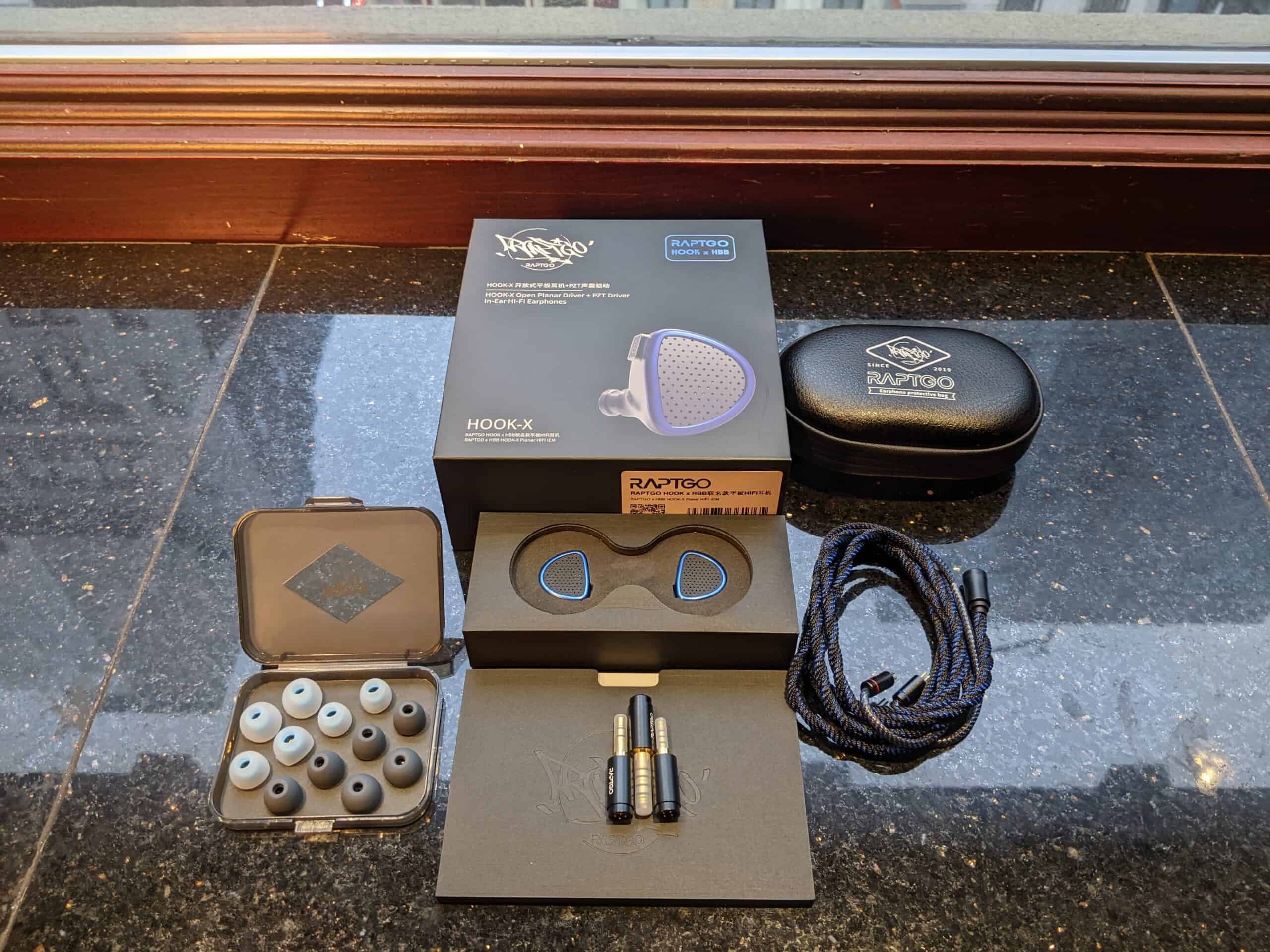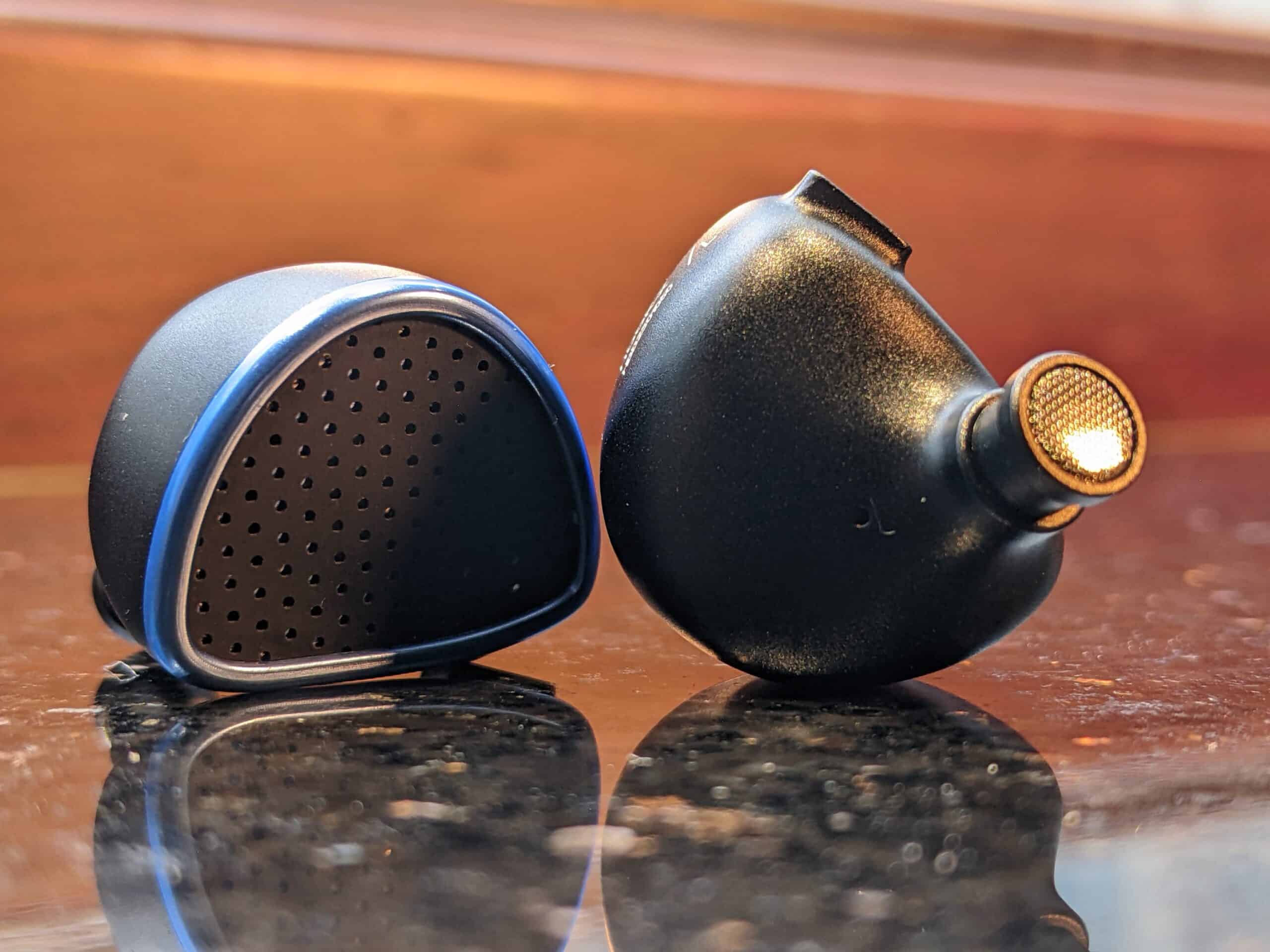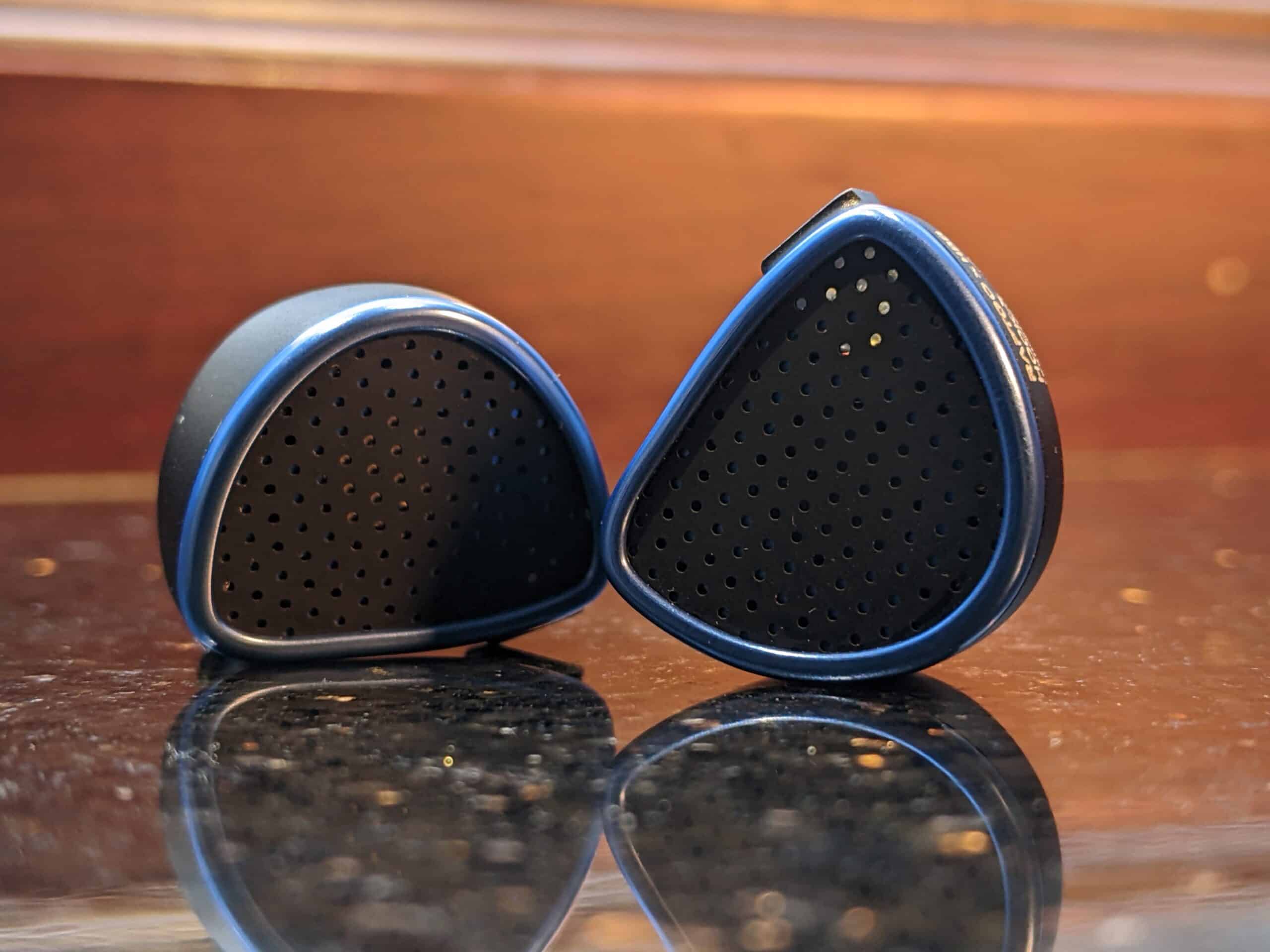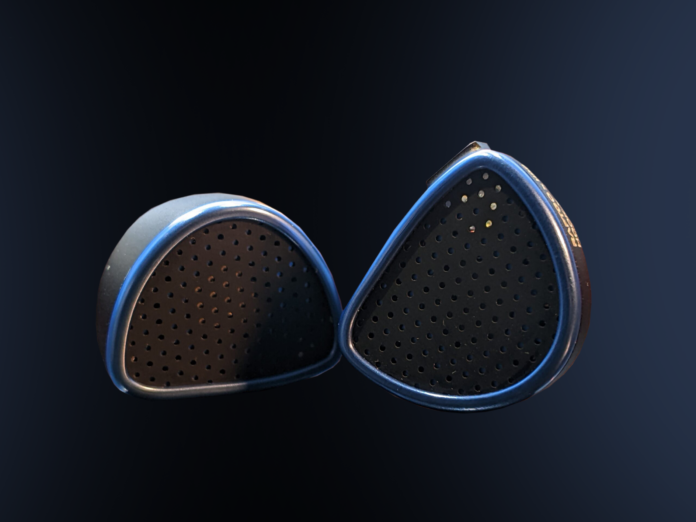RaptGo x HBB Hook-X Review
Last year, RaptGo made a splash with their Hook-X IEM, which offered a genuinely unique and impressive technical design for an IEM just under $250. Now, we see a revamp of the original in the form of the RaptGo x HBB Hook-X, a product of collaboration between RaptGo and audio reviewer Hawaiian Bad Boy. Is the new Hook-X as impressive as the last iteration? Let’s see what $259 gets you in the way of accessories, comfort, technical design, and sound quality.
What’s In the Box?

- RaptGo x HBB Hook-X Open-Back In-Ear Monitors
- Modular OCC Cable (2.5mm, 3.5mm, and 4.4mm Jacks)
- Eartip Case
- 6 Pairs of Silicone Eartips (2 varieties. S,M, L, each)
- Semi-Firm Carrying Case
- User Guide
Look and Feel
The RaptGo x HBB Hook-X has a flat, crescent-shaped open-back grille with a metallic blue border. The inner-side of the IEM is rounded, making it so that the Hook-X doesn’t exactly rest flush up against a listener’s ear. It’s nonetheless a fairly comfortable and natural fit that required negligible adjustments during my time with the in-ear monitor.
While the Hook-X is in fact an open-back IEM, it provides a level of passive isolation that is nearly on par with more typical closed back IEMs. The only open-back trait worth noting for now is its sound leakage, which isn’t terribly loud, but it’s a little too apparent to ignore.
Like the first Hook-X, the cable that comes with the HBB Hook-X seems pretty durable with its braided and well insulated design. The carrying case is semi-firm, actually pocket sized, and seems to offer considerable protection. All in all, a pretty comfortable fit, with a solid set of accessories.

Technical Design and Specs
The HBB Hook-X retains the oddball technical design we saw in the original. As I’ve already mentioned, the HBB Hook-X is an open-back IEM, which is a moderately niche characteristic in-and-of-itself. But even more curious features come to light when we look at driver configuration, which consists of one planar driver and one 12 layer, double sided PZT (piezoelectric) driver. The PZT driver sees a new acoustic shock drive bracket structure from the first version of the Hook-X which avoids vibration and transmission loss for a more accurate sound. I have to say, I’m unaware seeing a PZT driver in any other IEM that I’ve ever reviewed or listened with, original Hook-X aside. While this PZT driver is what earned the first edition of the Hook-X its reputation for having a bone conductor driver, such terminology is curiously absent from company statements on the new edition. Nonetheless, an open-back planar and PZT IEM going for just a little more than $250 is pretty exciting to see and worthy of the curiosity it seems to garner.

| Spec | RaptGo x HBB Hook-X |
| Operating Principle/Drivers | Open-Back. 14.2mm Planar Driver and 12 Layer, Double Sided Piezoelectric Driver |
| Impedance | 15 ohms |
| Frequency Response | 10 Hz – 20 kHz |
Sound Stage
Here, the benefits of the open back design featured on the HBB Hook-X are immediately apparent. I’m usually ready to forgive lackluster sound stages on IEMs that are under $300, but no such forgiveness is necessary with the HBB Hook-X. The stage offers its greatest spatial character in its width, and features some degree of depth and height as well. The heavily panned strings in the outro of “Alma_The Voyage” by Melody’s Echo Chamber sounded as though they came from out in front of me and several feet to my sides, while the iconic synth lick in “Robot Rock” by Daft Punk was presented as though it came from below me and far to my left. While a sense of significant distance is established in the the HBB Hook-X’s width, things are usually kept a little more insulated and close-to-the-face in terms of depth and height.
It’s also worth noting the unique effect produced by the PZT driver. It may have lost its official classification as a bone conductor driver, but I insist that something like bone conduction occurs in the HHB Hook-X’s low end. Kick drums had a heavy, in-your-head dimensional component to them that was a little more than just a typical bass slam. I found this added to the already vivid imaging in a particularly exciting and unique way, offering a snack-sized dose of the bone-conducting low ends in much higher-end IEMs like Empire Ear’s Legend Evo or the Empire Ears x Astell&Kern Odyssey.
Lows
The HBB Hook-X’s low end may be the most impressive and exciting part of the IEMs balance. As I was saying in the previous section, it possesses a punchy and powerful bass slam that was capable of sending kick drums deep into the center and back of my head. Subs see a fair deal of presence as well, as it didn’t take much to get the HBB Hook-X to rumble; however, the punchy mid bass seems to be the most prominent and noticeable quality in its bass response. This power comes without injuring the separation or clarity of the balance. Its low end boost seems concentrated on mid bass and subs, leaving high bass to cool down and maintain its distinction from the middle frequencies.
Mids
Simply put: unapologetically V-shaped. This isn’t a politically correct audiophile tuning, but instead, it’s fun and fairly well done. Mid range frequencies offer more of a supporting quality in the HBB Hook-X’s signature, and primarily serve to offer a wide space between the IEM’s slamming low end and snappy highs. I was pleased to find that vocals, while a bit lightweight, weren’t really a casualty of this tuning and presented naturally and airily. Perhaps the only criticism I have for this tuning decision lies in snare drums, which sounded a little thin and had their high-mid and treble qualities overshadowing their low and center mid thump. Tom-toms seem to lean into the light emphasis in the low mids, but most core parts, like guitars, vocals, and keyboards/synths, gravitate towards their high-mids and treble in response to their scooped center mids. I would note that their was a distinct lack of “warmth” in the HBB Hook-X’s signature – though this is a quality I actually appreciated as the trade off seemed to be a crisp balance with great separation.
Highs
While the forceful subs and mid bass present in the HBB Hook-X played a key role in my overall impression of its balance, the bold amplitudes found in higher frequencies make the Hook-X about as trebly as it is bassy. In fact, I would qualify the HBB Hook-X as a very trebly IEM, finding significant amplitude in low and mid treble alike, and ample extension in its high treble. The harmonic overtones in vocal reverbs and electric guitars found a particularly strong emphasis, while acoustic guitars had their stringier, washboard-like transients heavily boosted. Hi-hats had a sharp intensity, while vocals that were already lightened up in their mid range glided airily in their raspy details. So, while the HBB isn’t for the treble-sensitive, I for one hit it off with its high end balance that, despite its boldness, wasn’t particularly peaky or painful; airiness is the distinct quality I would ascribe to it.
Overall

The RaptGo x HBB Hook-X does not disappoint, and maintains the Hook-X’s position in the IEM market as a sub-$300 titan. As much as I enjoy its wide stage, and its low end that comes punching through its lightweight highs and mids, I find an extra enjoyment in knowing its sound is achieved through a genuinely experimental and innovative planar + PZT driver configuration. I hope we see the Hook-X become a mainstay in the IEM ecosystem, and look forward to any further iterations of its apparently winning technical design.
The RaptGo x HBB Hook-X can be purchased here from Audio46.
Compare the ranking of various headphones, earbuds and in-ear monitors using our tools.
Discuss this, and much more, over on our forum.
---MAJORHIFI may receive commissions from retail offers.















